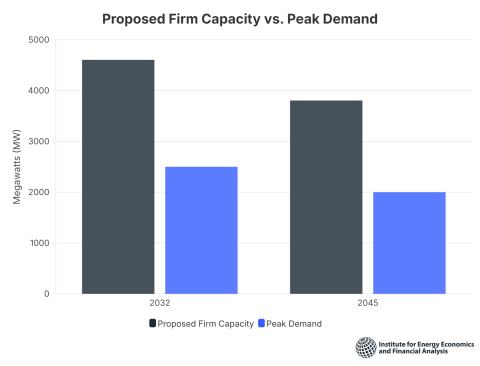U.S. coal - More market erosion is on the way
Download Full Report
Key Findings
Almost 7,300 MW of coal-fired generation were retired in 2017 and more than 16,000 MW of new, future retirements were announced. IEEFA estimates that 15,000 MW of coal-fired electricity generation will be retired in 2018, double the total in 2017 amount, and—for the first time—many retirement will be of plants with more than 1,000 MW of capacity.
Coal employment in 2017 was essentially flat as compared to 2016, and over the past two years coal-mine employment has been at its lowest levels in a decade.
Rollbacks of federal environmental regulations on coal mining and electricity production, as well as rescissions of reforms to the federal coal-leasing program, have proven largely ineffective in improving the balance sheets of coal producers in 2017. IEEFA expects little impact going forward.
Executive Summary
The U.S. coal industry continued to shrink in 2017, and its trend toward long-term structural decline is all but sure to persist in 2018.
That is the core conclusion of this report, informed by the following fundamentals:
- In electricity generation—the key market for coal—the industry is increasingly uncompetitive and is losing market share.
- Coal’s main competitors continue to be natural gas and renewables.
- The cost of generating electricity with wind and solar power is declining rapidly and, as a result, solar and wind are gaining market share. Significantly, wind power is showing strong growth in the competitive energy markets that are home to most of the country’s remaining coal-fired generating capacity.
- Natural gas prices remain relatively low today and are expected to remain low for the foreseeable future, which means that energy market prices will remain low, further undermining the financial viability of many coal-fired generators.
- Demand for electricity is growing very slowly.
- As more renewable and gas-fired generating capacity is added to the grid, coal faces increasing competition from these lower-cost alternatives.
- Further declines in coal’s energy generation market share can be expected through 2018 and beyond.
- Coal mining continues its long-term decline.
- Coal consumption stayed at record lows in 2017.
- Prices for thermal coal—used for electricity generation—remained low.
- Coal producers continued to lose customers. Following a well-established trend toward reduction of coal-fired generating capacity, more plants were retired in 2017 and more coal-plant closures were announced. In 2018, the total reduction in generating capacity of coal-fired plants will be double that of 2017.
- In several western U.S. locations—including for the first time in the Powder River Basin coal field, which is long the country’s strongest coal producer—attempts to buy and sell coal reserves ran into difficulty in 2017. Some deals could not find financing, and some posted negative valuations—meaning that the seller either received no cash or had to take a loss on the transaction.
- Employment in coal mining was essentially flat.
- Rollbacks of federal environmental regulations and other federal policy changes have not significantly improved coal’s market competitiveness.
All these trends aside, the coal industry showed improvement in some respects in 2017. Production was up in the largest one-year increase in more than a decade. This gain was due to increased demand and higher prices in the export market both for metallurgical coal (for steel production) and thermal coal (for energy production). The fourth quarter of the year saw improvement in the stock prices of industry leaders Arch Coal and Peabody Energy after their emergence from bankruptcy.
Nonetheless, IEEFA sees 2018 as a year of further decline for coal-fired electricity generation and the coal industry generally. Coal’s competitors—natural gas and renewable energy— begin the year with competitive tailwinds on price and outlook. Coal consumption and production are likely to decline, and coal prices and coal company margins will continue to be under pressure. Thermal coal export levels and global pricing of both metallurgical and thermal coal will decline. Even if promised regulatory relief at the federal level is achieved, market forces will continue to prevent a sustained coal recovery.
Please view full report PDF for references and sources.
















